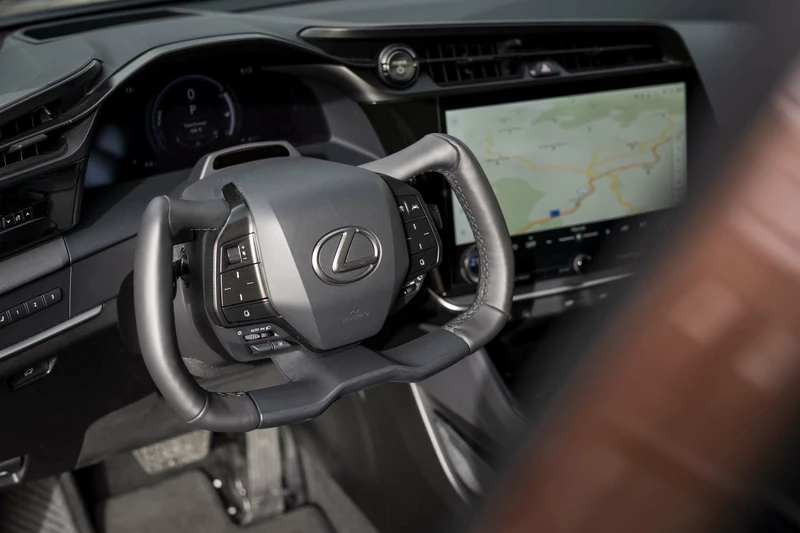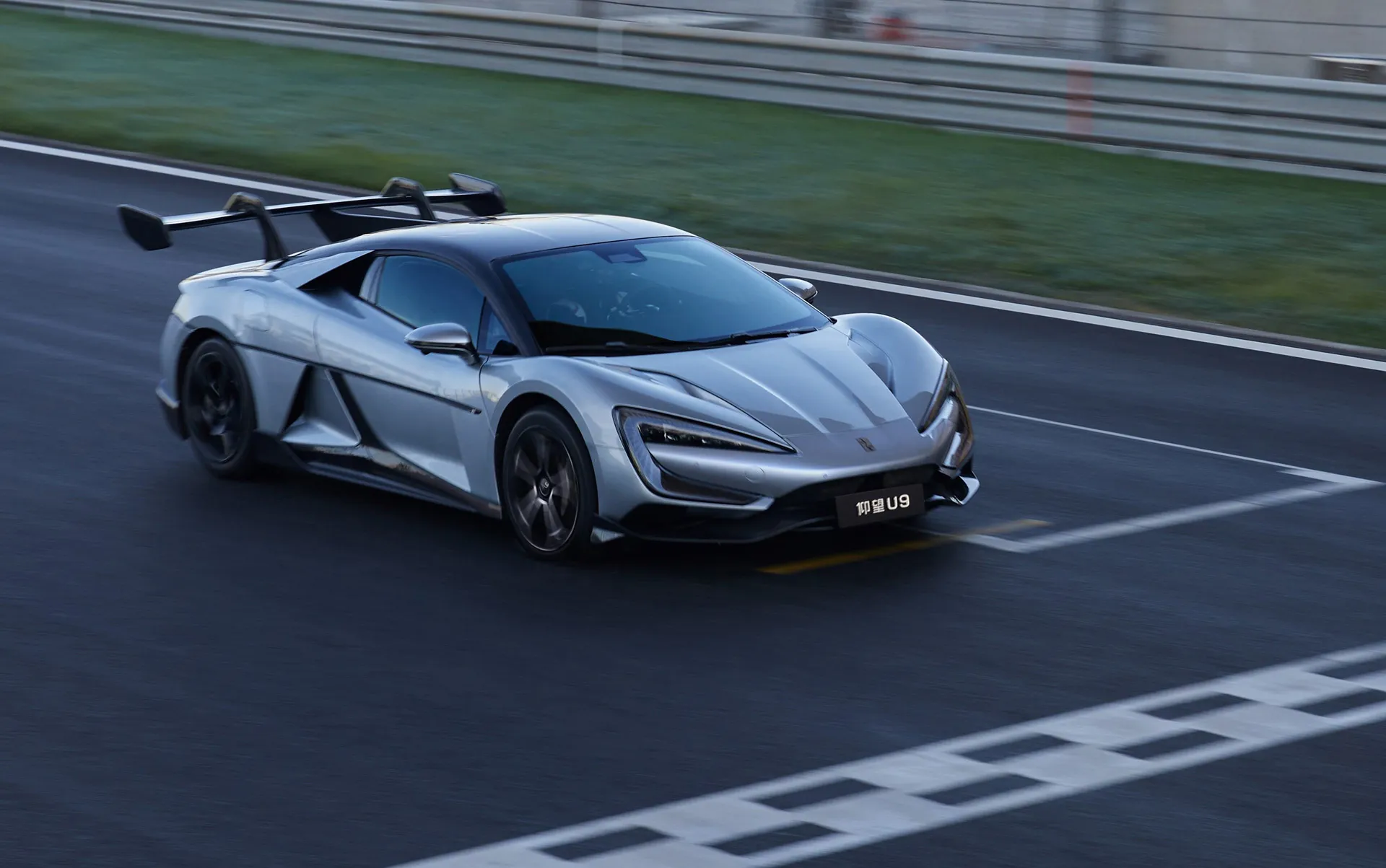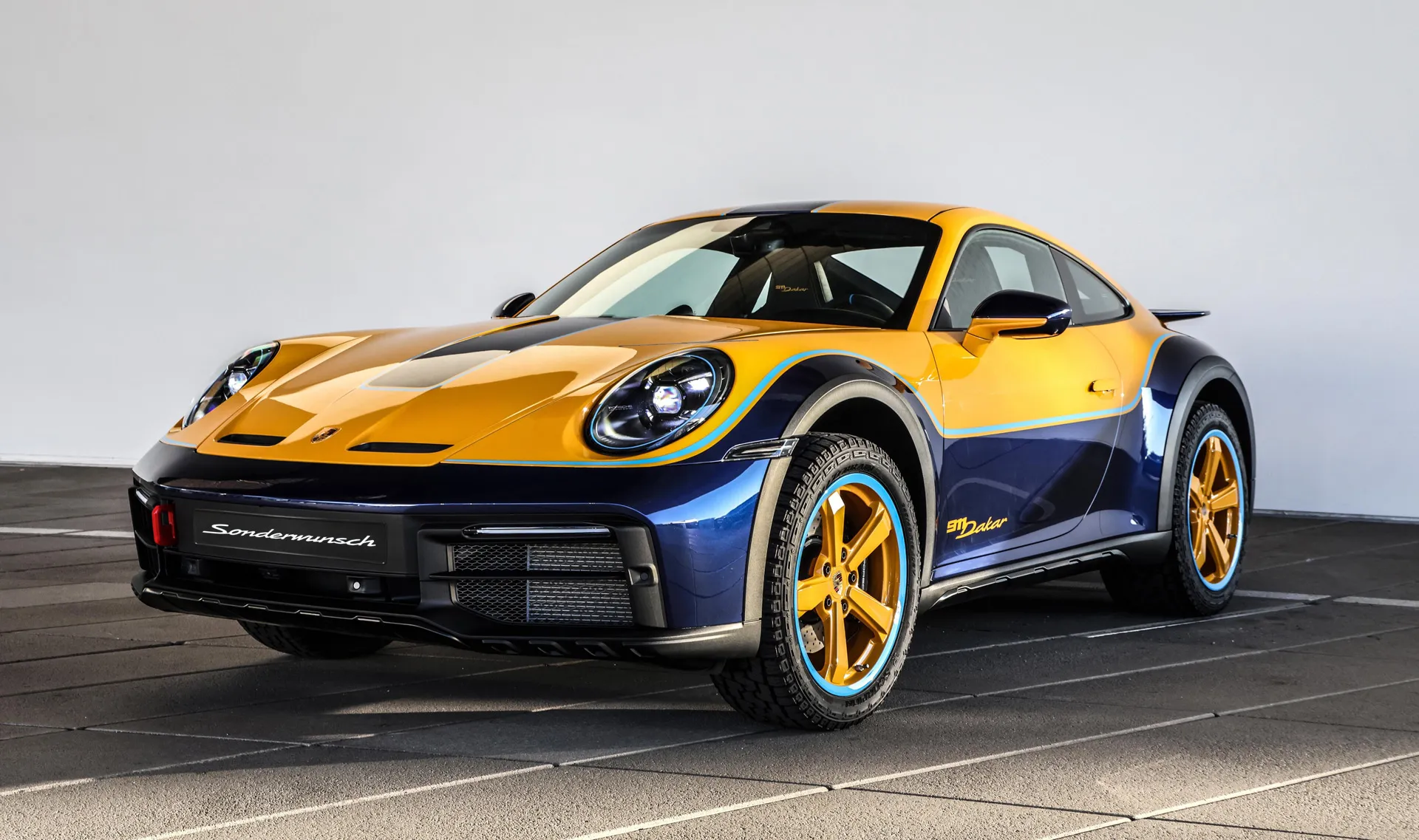Lexus yoke and steer-by-wire systems are paving the way for the future

After driving the 2023 Lexus RZ 450e prototype with conventional components, I got into the RZ with the yoke and steer-by-wire system. As I finished my first lap in turn three, I thought I was going nuts. Maybe it was the European food, lack of sleep, or too much coffee, but through the steering wheel I could feel the tires starting to reach the limit of their adhesion. What magic is that?
It seems unnatural, counterintuitive, even unpopular, but Lexus may be onto something with the yoke and the steer-by-wire system. Listen.
How Lexus' yoke and steer-by-wire system works.
Lexus made a yoke, but they didn't call it a yoke. The final name for the topless, flat-bottomed steering wheel has yet to be determined for the U.S. market. In Europe, it is called "One Motion Grip," or OMG for short. Lexus representatives forcefully insisted that the OMG name will not be carried over to the US.
Lexus' new steer-by-wire system is paired with this yoke. Both will debut on the Lexus RZ 450e, but will not be available for the first US model year. No U.S. release date has been set.
Tesla's yoke is a terrible, horrible, no-good idea because its traditional electric power steering has no variable ratios, forcing the driver to steer hand over hand without gripping the steering wheel up and down. Unlike Tesla's system, Lexus' steer-by-wire has no mechanical connection to the wheel, the steering ratio is infinitely variable, and the yoke only turns 150 degrees lock-to-lock. The ratio slows down at high speeds, and the ratio is much faster at parking lot-like speeds. To feel linear, the ratio remains nearly constant during cornering and steering inputs. When the yoke is straightened, the ratio changes little.
This yoke, which falls into the "Americans will hate this" category, essentially requires the driver to steer with both hands in the proper 9 and 3 o'clock positions. Fun fact: this is the correct way to drive a car safely. Also, the thumbs should be out of the way, not wrapped around the steering wheel.
The system is designed to provide feedback so that the driver knows if the wheel weights are off and the wheels are unbalanced.
According to Lexus chief engineer Takashi Mongabe, the system monitors the forces on the steering rack based on torque inputs from the tires. This is done by measuring gains in the lateral and yaw directions. From there, the system determines the amount of force feedback that should be returned to the steering wheel via the torque motor.
The system is fully redundant. Everything from the canvas and wiring harness to the programming are two and fully backed up in case of failure. The backup system is powered by a dedicated 12-volt battery, so even if the main battery dies, you will not lose steering functionality.
I liked the yoke
Indeed, I hated the yoke. Seems like a dumb idea. It's like someone is trying to reinvent the wheel for no reason.
However, practice on the race track has shown that it is preferable to conventional mechanical electric power steering systems and steering wheels. The reason is simple: it forces the driver's hands to get into a proper 9 and 3 grip, or if you want to cheat a bit, closer to a less than ideal but still acceptable 10 and 2 arrangement. Variable ratios meant less wheel rotation, and this system felt natural on the track.
After having Wantanabe explain how the system works, I realized it was neither sleep deprivation nor coffee. The steering felt, thanks to the ingenious design, certainly seemed shockingly authentic on the smooth, well-maintained circuit.
However, at low speeds, such as in a parking lot, the system is currently controversial.
I thought it was an autocross with coned loops, but was later told it was to simulate parking (sorry about the squealing tires and cornering, Lexus). The quick ratio of the steer-by-wire system was difficult to get used to in a short time. Still, my judgment was never so off as to hit a cone.
The ratio is still linear when turning, but at slower speeds the ratio increases dramatically. I didn't spend enough time behind the wheel to fully get used to the quick ratio. Additionally, it felt odd not to move my hands from the 9 and 3 position when turning a sharp corner, as if I were pulling into a Costco parking lot.
The calibration of the system I tested was not finished. When I operated the throttle at moderate to heavy at full lock in a corner at parking lot speeds, the yoke would jerk, as if the signals were mixed up and the system didn't know what to do. This was reproducible. Masayoshi Kobayashi, a steer-by-wire engineer at Lexus, told Motor Authority that this is a known issue and that the software is still being tweaked. Indeed, this particular situation is an extreme case and is unlikely to happen except during an emergency maneuver.
A Stepping Stone to the Future
Wantanabe told MA that a regular steering wheel could easily be connected to a steer-by-wire system. The yoke represents the car of the future, but it is not about self-driving cars. It's about decoupling the steering system from the wheel to save space.
The yoke improves visibility, makes the area around the steering column feel more open and airy, and encourages drivers to use the proper 9 and 3 hand position.
Wantanabe noted that steer-by-wire allows the steering system to be completely decoupled from the wheels. In the future, when cars become autonomous, this system would allow the steering wheel to remain motionless while the car drives itself. Wattabe believes that it would be tricky for the wheels to move freely without letting go of the wheel.
In the near future, Wantanabe came up with the idea of having the driver use the yoke to play "Gran Turismo" on the infotainment screen while waiting at the charging station. The steer-by-wire system could be electronically connected to the game. Programming could be tailored to the vehicle selected by the player in the game, and feedback could be provided to match the game's course variables. Lexus has not yet developed such a feature, but it could be in the future.
Improved safety and stability
Yoke and steer-by-wire systems could also lead to safer cars. To demonstrate how quickly the system can respond, in a very brief test on a skid pad, the RZ 450e was driven back and forth, first with the traditional steering wheel and electric-assist power steering connected, then with the yoke and steer-by-wire connected.
With the RZ in the traditional setup, the instantaneous torque of the electric powertrain easily turned the RZ sideways and honestly slightly out of control on the slick skidpad surface.
With the steer-by-wire system, however, it was much more difficult to de-wheel and turn sideways. Sensors that detect wheel torque, spin, and suspension movement know what is happening before sending feedback through the yoke, and the system counteracts the slide before it happens, keeping the RZ as straight as possible.
Bert Ehren, head of product planning and marketing for Lexus Europe, told MA that the system can even counteract crosswinds. On bumpy roads, the system can eliminate some of the vibration so that it is not transmitted to the yoke. Lexus essentially allows drivers to dial in what they want to feel and experience.
Time and place
The Lexus RZ is a low-volume production model in the U.S., with an initial annual production volume of 4,900 units, followed by 4,800 to 6,000 units per year. It will be Lexus' first electric vehicle sold in the United States. This explains why Lexus used steer-by-wire and yoke on the RZ.
The yoke works the way Lexus has implemented it. The yoke and steer-by-wire system makes a lot of sense for a circuit car or a car that is meant to be driven spiritedly on winding country roads. It is even a good idea for electric cars with the right platform and features to fully exploit the advantages of steer-by-wire; RZ is none of these, but it foresees a steering system that could work well in the future.
Motor Authority test drove the RZ prototype, and Lexus covered the airfare, hotel, and meals for us to bring you this report.
.

